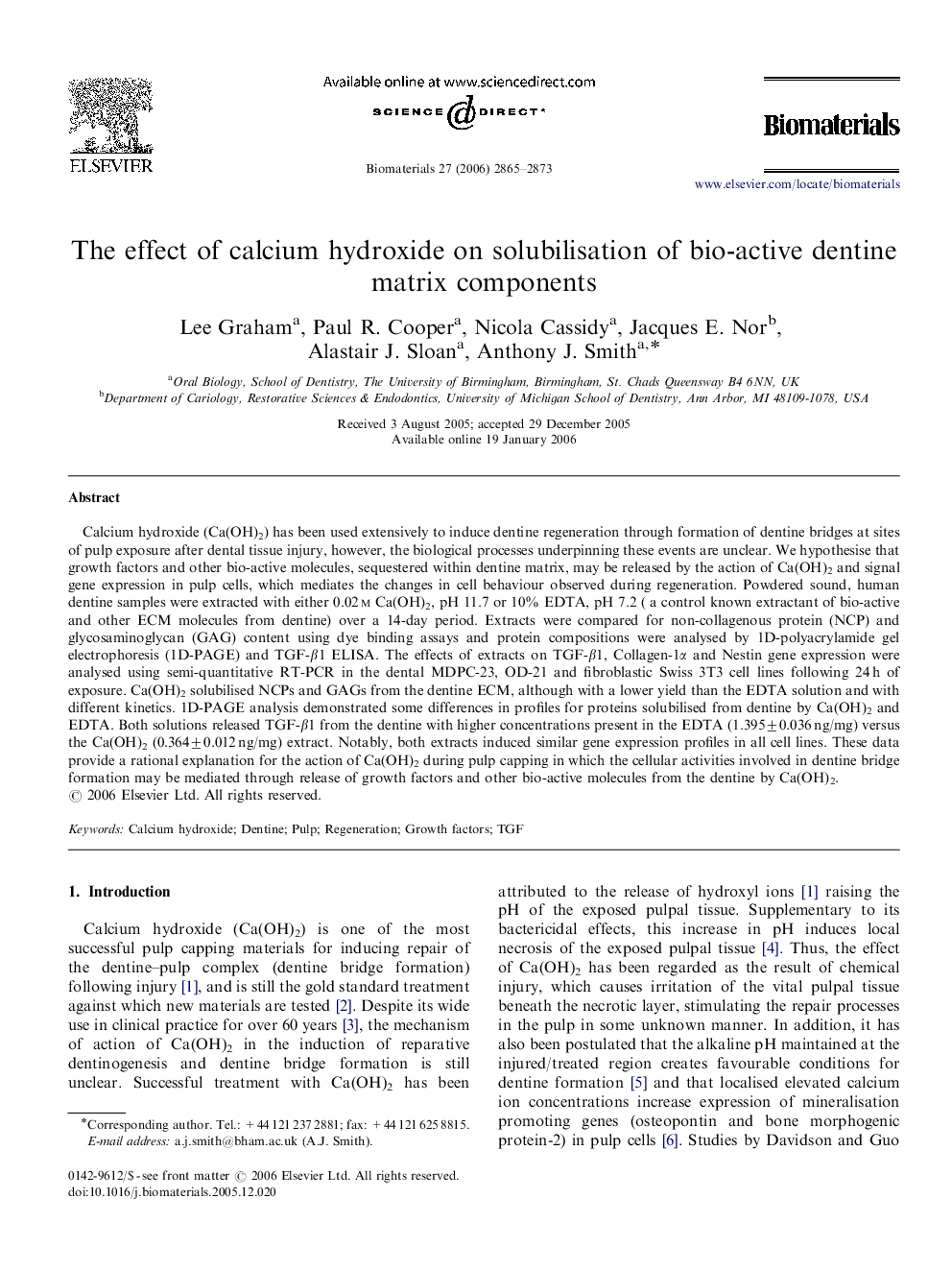| کد مقاله | کد نشریه | سال انتشار | مقاله انگلیسی | نسخه تمام متن |
|---|---|---|---|---|
| 11450 | 741 | 2006 | 9 صفحه PDF | دانلود رایگان |

Calcium hydroxide (Ca(OH)2) has been used extensively to induce dentine regeneration through formation of dentine bridges at sites of pulp exposure after dental tissue injury, however, the biological processes underpinning these events are unclear. We hypothesise that growth factors and other bio-active molecules, sequestered within dentine matrix, may be released by the action of Ca(OH)2 and signal gene expression in pulp cells, which mediates the changes in cell behaviour observed during regeneration. Powdered sound, human dentine samples were extracted with either 0.02 m Ca(OH)2, pH 11.7 or 10% EDTA, pH 7.2 ( a control known extractant of bio-active and other ECM molecules from dentine) over a 14-day period. Extracts were compared for non-collagenous protein (NCP) and glycosaminoglycan (GAG) content using dye binding assays and protein compositions were analysed by 1D-polyacrylamide gel electrophoresis (1D-PAGE) and TGF-β1 ELISA. The effects of extracts on TGF-β1, Collagen-1α and Nestin gene expression were analysed using semi-quantitative RT-PCR in the dental MDPC-23, OD-21 and fibroblastic Swiss 3T3 cell lines following 24 h of exposure. Ca(OH)2 solubilised NCPs and GAGs from the dentine ECM, although with a lower yield than the EDTA solution and with different kinetics. 1D-PAGE analysis demonstrated some differences in profiles for proteins solubilised from dentine by Ca(OH)2 and EDTA. Both solutions released TGF-β1 from the dentine with higher concentrations present in the EDTA (1.395±0.036 ng/mg) versus the Ca(OH)2 (0.364±0.012 ng/mg) extract. Notably, both extracts induced similar gene expression profiles in all cell lines. These data provide a rational explanation for the action of Ca(OH)2 during pulp capping in which the cellular activities involved in dentine bridge formation may be mediated through release of growth factors and other bio-active molecules from the dentine by Ca(OH)2.
Journal: Biomaterials - Volume 27, Issue 14, May 2006, Pages 2865–2873